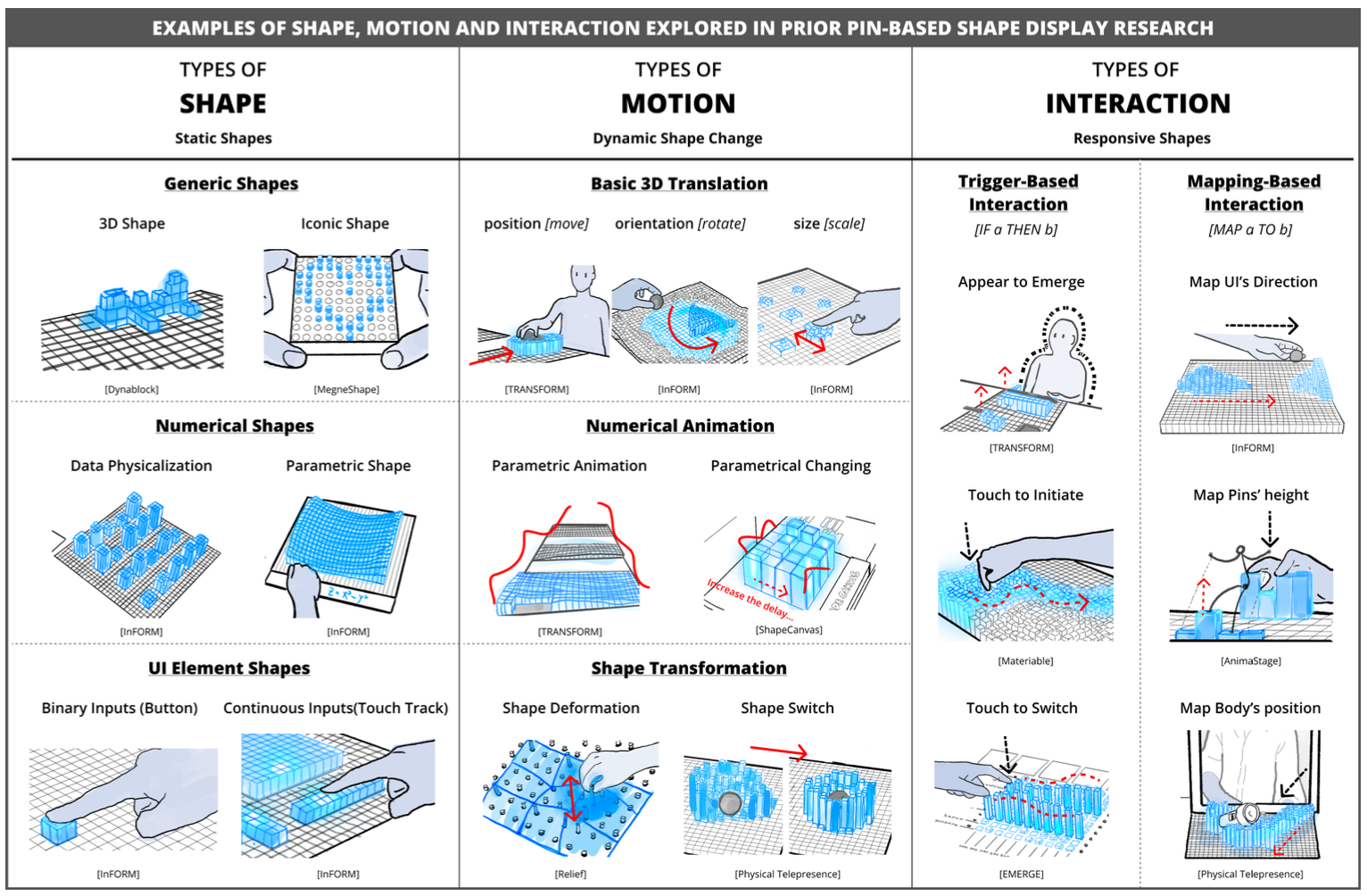

Abstract
We envision that AI-enabled shape display that renders dynamic 3D shapes leveraging Large Language Models. Unlike conventional shape displays requiring pre-programmed behaviors for shape and animation creation, SHAPE-IT integrates Generative AI (GPT4) with pin-based shape displays, facilitating on-demand and on-the-fly authoring of dynamic shapes. This innovative approach empowers users to dictate shape, motion, and interaction through real-time natural language inputs, bypassing the need for coding. The implementation showcases a software bridge between custom prompts for GPT4 and a Unity-based shape rendering software, generating scripts to control shape display based on user instructions. Applications extend to gaming, entertainment, on-demand teaching aids, adaptive furniture, and controllers, demonstrating a rich potential for this technology. A ten-participant user study sheds light on the promising concept and unveils insights for addressing future research challenges.
Contribution
- The significant contribution of this paper is the integration of Generative AI (specifically GPT4) with pin-based shape displays. This integration allows users to generate dynamic shapes on-demand.
- Users can interact with the system using real-time natural language inputs, which eliminates the need for coding.
- Implemented a software bridge between custom prompts for GPT4 and Unity-based shape rendering software. This bridge facilitates the generation of scripts that control the shape display based on user instructions.

Implementation
- Implemented a software system that processes language instructions and translates them into dynamic and interactive shape-changing behavior.
- The system is a proof-of-concept prototype that integrates: Hardware-based multi-modal interaction using inFORCE(5x10) and GUI-based interaction on Unity.
Evaluation
- A user study with 12 participants was conducted to evaluate the concept of SHAPE-IT. The study revealed the promise of the concept and also provided insights into potential research challenges.
- Performance of the system is evaluated based on text complexity as well as demonstrated the system’s versatility in creating shapes, motions, and interactions.